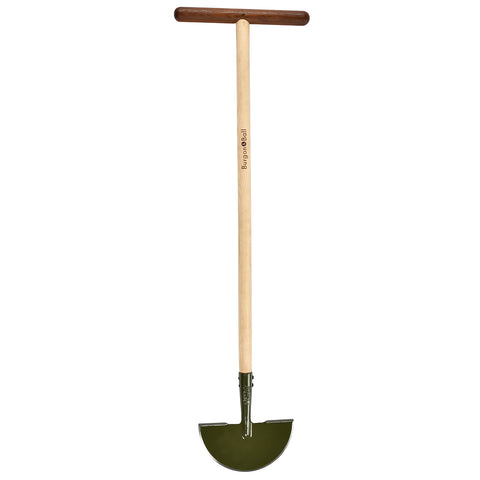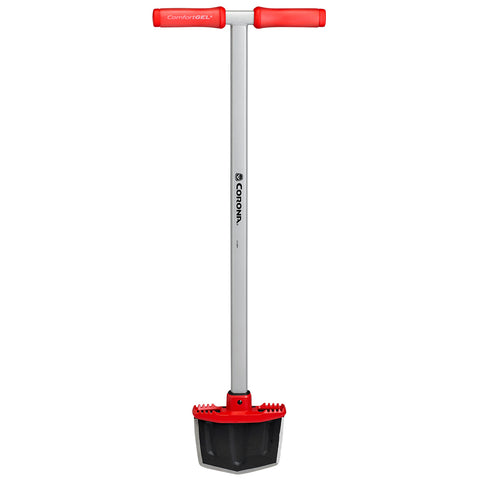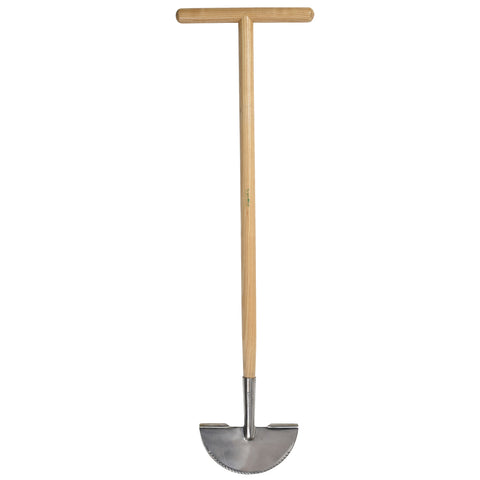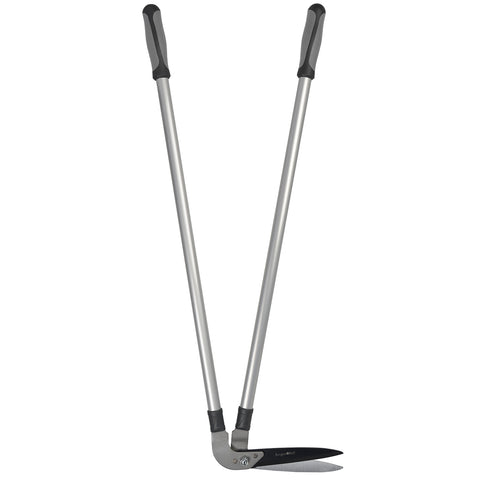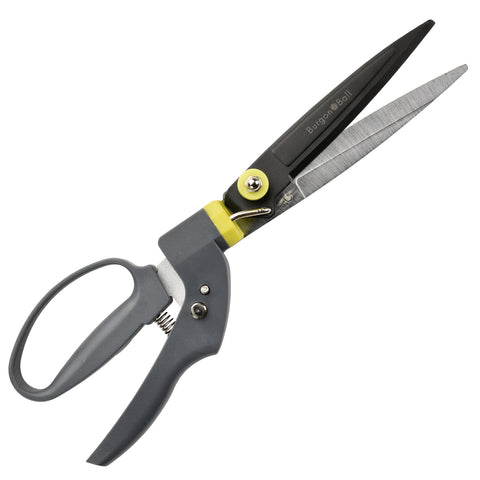
Spring is here, and although the season often gives us a bit of a mixed bag when it comes to weather, now’s the perfect time to be getting on with spring gardening jobs like edging your lawn. A smooth lawn offers the perfect foil to flower beds, as it gives maximum impact the contrasts of colour and texture it frames. Re-defining the edges of your lawn is a great way to give your garden spruce-up, as it will make any lawn look crisp and manicured, even if it’s still a little winter-worn in places.
Lawn edging is best done in spring or autumn, as there’s no strong growth to mask existing edges. Also, the ground is not frozen but has not yet dried out, so it’s soft to work. Use this window of opportunity either to redefine an existing lawn edge, or be bold and create a new flower bed to create more planting space.
How to edge your lawn
First things first: mow the grass. This will reveal the current edge and show if the edge has wandered. It also means you won’t have to fight through long grass when cutting.
When it comes to cutting the turf, a half-moon edger is the perfect tool for the job. These are ideal for removing grass which has grown over a pathway or driveway, or for removing turf next to a flower bed.
Using a half moon edger is a lot like using a spade. Drive it down into the ground with your foot, so the lip at the top of the blade touches the soil. Rock the edger side-to-side to release it from the ground, then gently pull the handle back up.
If you’re working on open lawn edges (that is, not abutting paving or border edging), you can help make them more stable by cutting down at an angle of 20 to 40 degrees from the vertical to give a slightly ‘banked’ effect, rather than straight down. Once they’re cut, try to avoid walking on them.

After cutting your new edges, use an edging shear to trim any areas of longer growth which are falling or leaning over the newly-cut edge. This will give your lawn the perfect crisp finish.
As a final step to leave a pristine finish, collect up the offcuts and add them to the compost heap - as long as you've not used any weedkillers on your lawn, of course.
Shaping a new bed
You may feel that you want more room for plants in your garden, or you may want to spend less time on lawncare. If you’re looking at creating an entirely new bed, where should you start?
Bear in mind that different shapes of flower bed can dramatically alter the atmosphere of a garden. A straight edge creates a formal feel, whereas an irregular, drifting shape can feel much softer. You can also use shapes to create optical illusions: straight borders down either side of a garden can make it look smaller, whereas a sweeping curve can make it feel bigger than it actually is.

When it comes to distance from front to back of the flower bed, the choice is yours! Ideally you’d have a minimum depth of around a metre, to comfortably accommodate several different heights of plant for a full, rich look. Always consider access, if you want really deep flowerbeds – how will you get at the plants at the back?
It’s really important to mark out your flower bed before you start cutting, to give you a line to follow. It’s really not a good idea to try to do it by eye! For straight lines, push two canes down into the lawn, and tie a string between them to create a straight line. For a shorter straight lines, simply put down a plank to work along.
If you want a circular flowerbed, push a cane into the lawn at the centre point, tie a string around it with a length the diameter of your new flowerbed, then walk around the cane holding the string taut, using marking paint on the ground. To mark out a gentle curve, you could lay a garden hose on the ground, or a length of rope. For curves, starting in the centre and working out to the sides can give a better result, as you're less likely to find your course having wandered. You don't want to end up with a kink in your beautiful new edge, as you fight to get the gentle sweep of the curve back on track.
Whether you’re simply sprucing this spring, or getting more creative with your cutting, getting a crisp edge to your lawn doesn’t need to be difficult.


